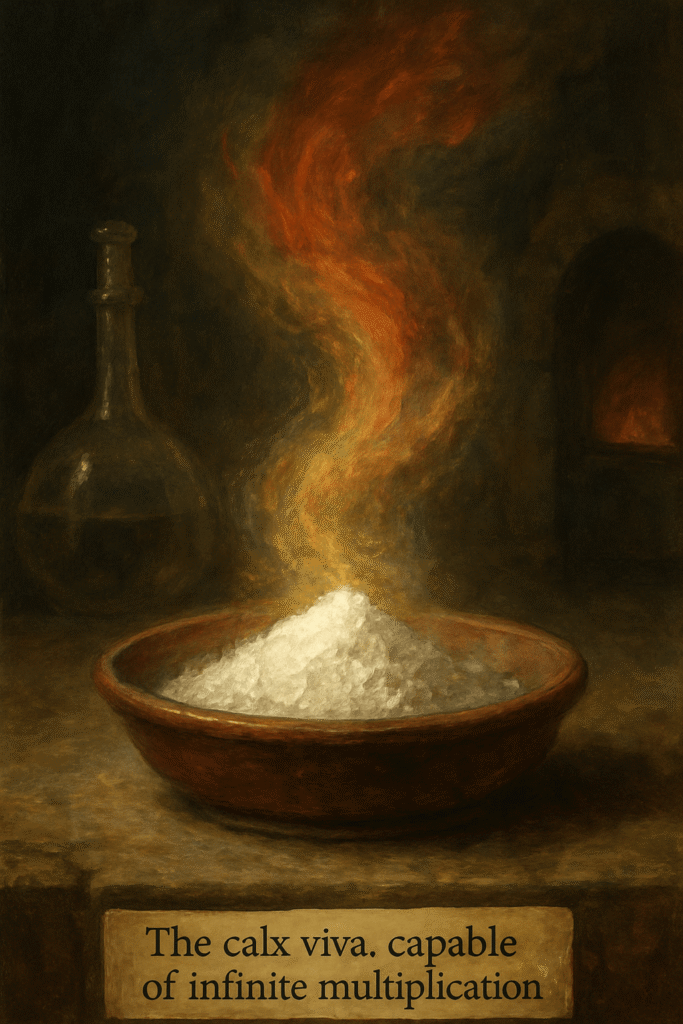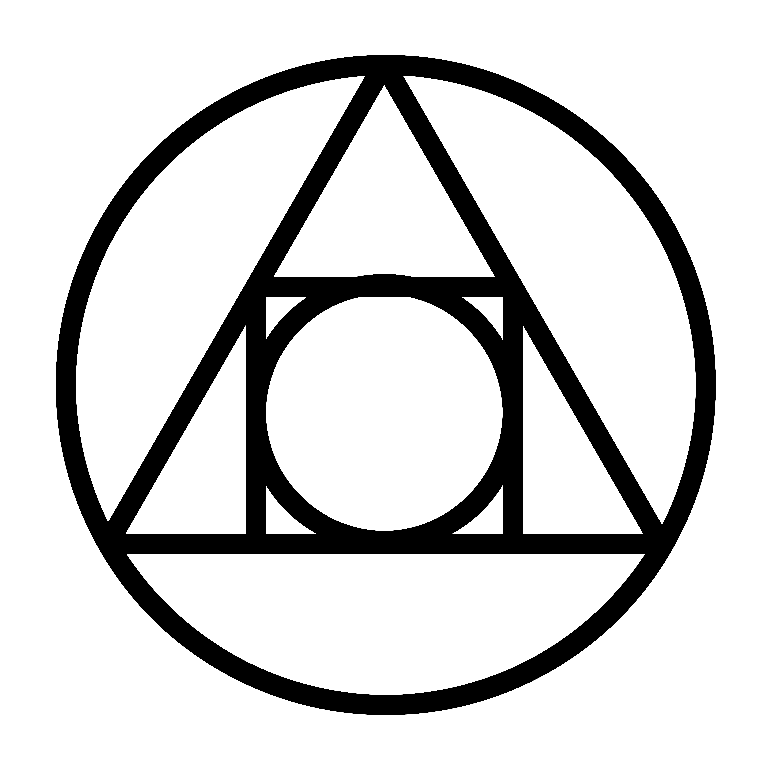Philosopher’s Stone Part Seven:
Clavicula (Little Key of Llull) — The True Argent Vive and Its Multiplication

Philosopher’s Stone Part Seven:
Clavicula (Little Key of Llull) — The True Argent Vive and Its Multiplication
Bibliographic Introduction
The Clavicula, or Little Key of Llull, is a short pseudoepigraphic treatise from the 14th century, attributed to Ramon Llull but almost certainly composed by a later alchemist. It is positioned as a companion to the Testamentum, declaring that without this “little key,” the rest of Llull’s alchemical corpus cannot be understood. Though brief, it serves as a clear catechism of central doctrines: the rejection of vulgar mercury, the necessity of argent vive extracted from Sol and Luna, and the stages of color transformation leading to multiplication of the Stone.
Philosophical Mercury in the Clavicula
The text insists on a strict distinction between vulgar quicksilver and the true argent vive of the philosophers:
“Argent vive Vulgar cannot be the Argent vive of the Philosophers, whatever Art it be prepared with, for the Vulgar cannot be detained in the Fire, but by another Argent vive corporeal which is hot and dry, and more digested.” (Clavicula, Ch. 1)
This true mercury is described as hot, dry, corporeal, and fixed, in contrast to the cold and moist vulgar mercury. It is extracted from Sol and Luna themselves, not from mines or apothecaries’ shops:
“Unless you take the Argent vive of these two [Sol and Luna], you go on to the Practick as blind men without eyes and sense.” (Clavicula, Prologue)
Philosophical mercury here is defined as a metallic essence, a humidity concealed within gold and silver, drawn out through art, capable of union with vulgar mercury to render it stable and medicinal.
Extracting the Method
The Clavicula gives more operational detail than the Testamentum. Its method includes:
-
Reduction of Bodies: Sol and Luna must be reduced into their first matter, their hidden argent vive.
-
Amalgamation: Vulgar mercury is united with this extracted mercury, which dries its cold humidity and fixes it.
-
Putrefaction: The mixture blackens like coal — the “eclipse” of Luna and Sol.
-
Color Progression: Black → grey-brown → white → red.
-
Calx viva: A quick slime or white powder is formed, the “mine” of the philosophers.
-
Multiplication: This powder can be projected infinitely, multiplying silver or gold beyond natural ore.
The text includes recipes: calcination of Luna on porphyry, imbibition with oil of tartar, extraction of mercury by corrosive “stinking menstruals” of vitriol and saltpeter, and sublimation with alembics. These details show that the author was acquainted with laboratory practice, though expressed in allegorical terms.
Evidence of Practice
Unlike Arnaldus or the Epistle genre, the Clavicula uses specific procedures: rectifying corrosive menstrua, drying calxes, stirring precipitates with boiling water, observing the precipitation of metallic mercury. Such imagery suggests contact with actual metallurgical operations. While the recipes are not straightforwardly workable, they reflect an operator’s memory of chemical manipulations, cloaked in allegory.
Contribution to the Stone Tradition
The Clavicula makes several key contributions:
-
Explicit Rejection of Vulgar Mercury: Only mercury extracted from Sol and Luna counts.
-
Doctrinal Clarity: Argent vive is hot, dry, fixed — the opposite of vulgar quicksilver.
-
Multiplication Doctrine: Once true mercury is prepared, its powder can multiply infinitely.
-
Operational Detail: Provides a clearer laboratory sequence than the Testamentum.
In contrast to the Testamentum’s broader allegory, the Clavicula attempts to present a direct manual, though still couched in secrecy.
Deciphered Method
Summarized, the Clavicula’s method is:
-
Calcine Luna or Sol, grind on porphyry, imbibe with philosophical solvents.
-
Extract argent vive from the calx using a rectified corrosive menstrual.
-
Unite this true mercury with vulgar mercury by amalgamation.
-
Putrefy under gentle fire, observe blackening and subsequent whitening.
-
Obtain calx viva (white powder), capable of reducing vulgar mercury into true metals.
-
Multiply the powder infinitely, projecting into molten silver or gold.
Philosophical mercury here is the argent vive extracted from Sol and Luna, hot, dry, fixed, and medicinal.
Conclusion
The Clavicula or Little Key of Llull crystallizes the pseudo-Llullian doctrine: the philosophers’ mercury is not vulgar quicksilver, but a fixed metallic humidity drawn from Sol and Luna themselves. Its method emphasizes amalgamation, color stages, and multiplication, giving more practical imagery than the Testamentum. Though brief, it served as a catechism for later adepts, reinforcing the definition of true mercury and warning against the errors of vulgar interpretation.
| Author / Text | Philosophical Mercury | Preparation Steps | Union Method | Fire / Heat | Color Signs | Product Claims |
|---|---|---|---|---|---|---|
| Zosimos of Panopolis (c. 300 CE) | “Divine water” in the kerotakis; volatile spirit ascending and descending | Calcination, sublimation, distillation, washing | Circulation in sealed vessel; dissolution and recombination | Gentle, regulated heating; moist fire | Blackening, whitening, reddening | Tincture, purification of metals; spiritual rebirth |
| Emerald Tablet (Arabic/Latin, 9th–12th c.) | “One Thing” mediating heaven and earth; volatile principle implied | None explicit; “separate the subtle from the gross” | Circulation: ascent and descent of the subtle | Not named; implied gentle force | None specified; allegorical “glory of the whole” | Perfection of all things; universal power |
| Turba Philosophorum (12th c., Arabic → Latin) | Permanent water: vinegar/gum/spume of Luna; volatile-fixative solvent | Putrefaction 40 days; washing; imbibition; coagulation | Copper (sometimes with lead/tin) dissolved in permanent water | Gentle fire; sealed vessel; staged regimen | Blackening → Whitening → Reddening → Tyrian purple | Tincture of metals; Stone “not a stone”; invariable color |
| Artephius, Secret Book (12th c.) | Hidden mercury within antimony; combined with gold | Dissolution of Sol/Luna in “living water” (moist fire); putrefaction | Antimony + mercury + gold in one vessel | Gentle, continuous heat (“hen brooding eggs”) | Black → White → Red | Incombustible oil; multiplicative tincture; longevity |
| Pseudo-Geber, Summa Perfectionis (13th c.) | Purified, sublimed, partly fixed quicksilver | Repeated sublimation with salts/vitriols; fixation of volatile | Mercury + purified sulfur joined in vessel | “Convenient fire”: moderate, continuous decoction | Black → White → Red | Philosophers’ Stone (Elixir); projection of metals; medicinal virtues |
| Arnaldus de Villanova, Epistle (late 13th–early 14th c.) | Hidden mercurial humidity within metallic bodies; not common quicksilver | Dissolution, putrefaction | Unite body and hidden mercury in vessel | Gentle, continuous fire | Black → White → Red | Incombustible Stone; tincture of metals |
| Pseudo-Llull, Testamentum (14th c.) | Philosophical water: metallic phlegm; first water of mercury; middle nature uniting extremes | Dissolution in water; decoction; separation of phlegm; imbibition | Union of Sol and argent vive via middle nature | Continuous gentle fire; decoction, filtration | Black → Pale chaff → White → Red | Red powder tincts silver into gold; Stone of projection |
| Pseudo-Llull, Clavicula (14th c.) | Fixed, hot, dry argent vive extracted from Sol and Luna; not vulgar quicksilver | Calcination of Sol/Luna; imbibition; extraction with corrosive menstrual; amalgamation | True mercury unites with vulgar mercury, fixing it | Gentle fire in degrees; staged regimen | Black → Grey → White → Red | Calx viva; infinite multiplication; projection into Sol or Luna |
